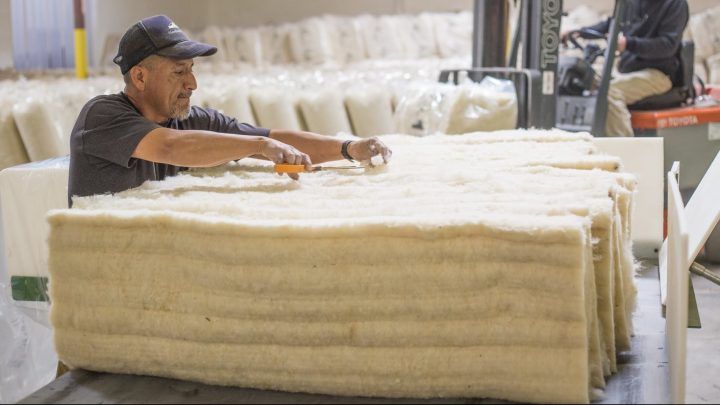
Consumer demand for sustainable products goes wall to wall
Consumer demand for sustainable products goes wall to wall

On a recent Wednesday afternoon, inside a 67,000-square-foot manufacturing facility in Reno, Nevada, a large machine moved a fluffy, off-white material through a series of drum rollers.
The substance was being layered into panels of insulation made from something you’re more likely to find on a sheep than inside a house.
“Hot, cold, warm, dry — wool does it all,” said Andrew Legge, founder and managing partner of Havelock Wool.
Legge started the company in response to the lack of healthy and sustainable insulation choices. Common materials like fiberglass and spray foam can contain toxic chemicals that pose health risks to installers. Legge said that’s pushing more homeowners to say, “‘Wait, I don’t want that.’”
“And if we’re doing our job,” he continued, “then when they go searching for an alternative, they find us.”
A lot of people found them during the pandemic. Havelock Wool’s sales quadrupled in 2020 and grew another 25% the following year. Legge added that sales were flat last year because production couldn’t keep up with demand.
But businesses like Havelock Wool face many challenges, according to John Freer, who leads the sustainable construction program at Missoula College in Montana.
“It’s an industry that’s so resistant to change,” he said. “And so when you’re introducing a new material or a new technique, it’s a little frightening.”
Many customers are also scared off by the prices. Sustainable insulation can cost twice as much as other types, adding thousands of dollars to a project, per Daniel Fraiman, who builds homes in the Lake Tahoe region.
“They love the idea and they get attached to it early on,” Fraiman said. “And then once we get into what it costs, it doesn’t make the cut.”
But there are still plenty of buyers. Back at Havelock Wool, Legge said the company will increase output later this year.
“We are well aligned with what long-run demand looks like for better, healthier, more sustainable products,” he said.
The company invested in new machinery so it can triple its processing capacity to more than 16,000 pounds of wool a day.
There’s a lot happening in the world. Through it all, Marketplace is here for you.
You rely on Marketplace to break down the world’s events and tell you how it affects you in a fact-based, approachable way. We rely on your financial support to keep making that possible.
Your donation today powers the independent journalism that you rely on. For just $5/month, you can help sustain Marketplace so we can keep reporting on the things that matter to you.

















